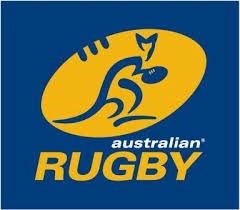Rugby continues to grow on the Road to 2016 Olympics in Rio
More people played Rugby in 2014 than ever before, with 687,488 participants enjoying Rugby experiences nationally, an increase of 12% compared to 2013.
241,577 of the total participants played in Rugby competitions with 5 or more games/sessions, an increase of nearly 5% (10,915) in 2014. A further 445,911 participants had less than 5 games/sessions, an increase of 16% (60,662).
For the past two years, Rugby participation has grown annually by an average of 20% and the trend is set to continue through the introduction of a new non-contact version of Rugby – VIVA7s and Sevens Rugby’s presence at the 2016 Olympic Games in Rio.
Although overall participation has increased, participation in Club Rugby has remained stable with marginal growth of less than 1% from 2013.
General Manager of Rugby Participation Andrew Larratt said the national findings were encouraging, with the introduction of programs that are part of a plan to attract new and diverse people to Rugby and in the long term re-energise club Rugby.
“Our purpose is to help more participants play more often across all formats of non-contact Rugby, sevens and 15 a-side Rugby.
“There’s a growing appetite for Rugby Sevens and we expect that to continue as we sharpen our focus on Sevens in the lead-up to the 2016 Olympics.
“However, we acknowledge that we’re only seeing marginal growth in the traditional format of our game. It’s important for us to work closely with clubs and competitions nationally to help recruit and retain players and seek to grow demand and convert new participants across all three formats – VIVA7s, Sevens and 15-a-side Rugby.”
Mr Larratt also highlighted the need to continue to build on the 6.3% increase in School Competitions as Australian Rugby looks to broaden Rugby’s appeal to boys and girls across the country.
“Schools are a critical part of Rugby’s plan to help get more people involved as players, volunteers and supporters. It is was pleasing that in 2014 National Rugby Week had over 120,000 students from 726 schools across all eight states and territories participating in classroom, field and carnival-based Rugby activities.
“We also know that more women are playing Rugby internationally than ever before, as global participation increased from 1.5 to 1.77 million (18% growth) in 2014. Australian Rugby has demonstrated similar growth, which highlights the relevance, diversity and global nature of our sport.”
The traditional format of 15 a-side Women’s Rugby saw 12,733 participants, while Women’s Sevens attracted a further 13,488 for a combined total of 26,841 participants, an increase of 18% compared to 2013.
At a state level, when aggregating all participant categories Queensland led the country with 296,356 participants (43% of 687,488) in 2014, representing a 14% increase. New South Wales has the highest number of competition participants, with 116,521 (48% of 241,577) in 2014.
ACT and Western Australia maintained overall participation rates for Club Competition, however significantly increased promotional or occasional participation, sampled over 60,000 and 40,000 participants respectively. Victoria, South Australia, Tasmania and Northern Territory recorded marginal decreases in competition and non-competition programs in 2014, however Tasmania and Northern Territory achieved positive growth with more than 5,000 promotional participants.
In the Australian Rugby Union’s second Annual Participation Census under the revised methodology to come in line with other major sports, the report was once again undertaken by independent demographers, Street Ryan and Associates, during the Census calendar year of 1 October – 30 September 2014.
*Australian Rugby’s Participation Census defines two categories of Rugby Participants:
• Competition (Comp’ >5) – ‘playing Rugby/participating in an organised competition/tournament/structured program at least five times over the census year.’
• Promotional (Promo’ <5) – ‘playing Rugby/participating in a competition/ tournament/program less than five times over the census year.’
A player can be a ‘participant’ more than once in any year (e.g. a 15s club and school player who also plays in a Rugby Sevens competition in the summer, would be considered a participant three times).
Related Posts
« AUSSIE WOMEN’S SEVENS TEAM LEFT FRUSTRATED BY DOUBLE LOSS IN CANADA Volkskool Heidelberg’s results up to the 18th of April 2015 »



















